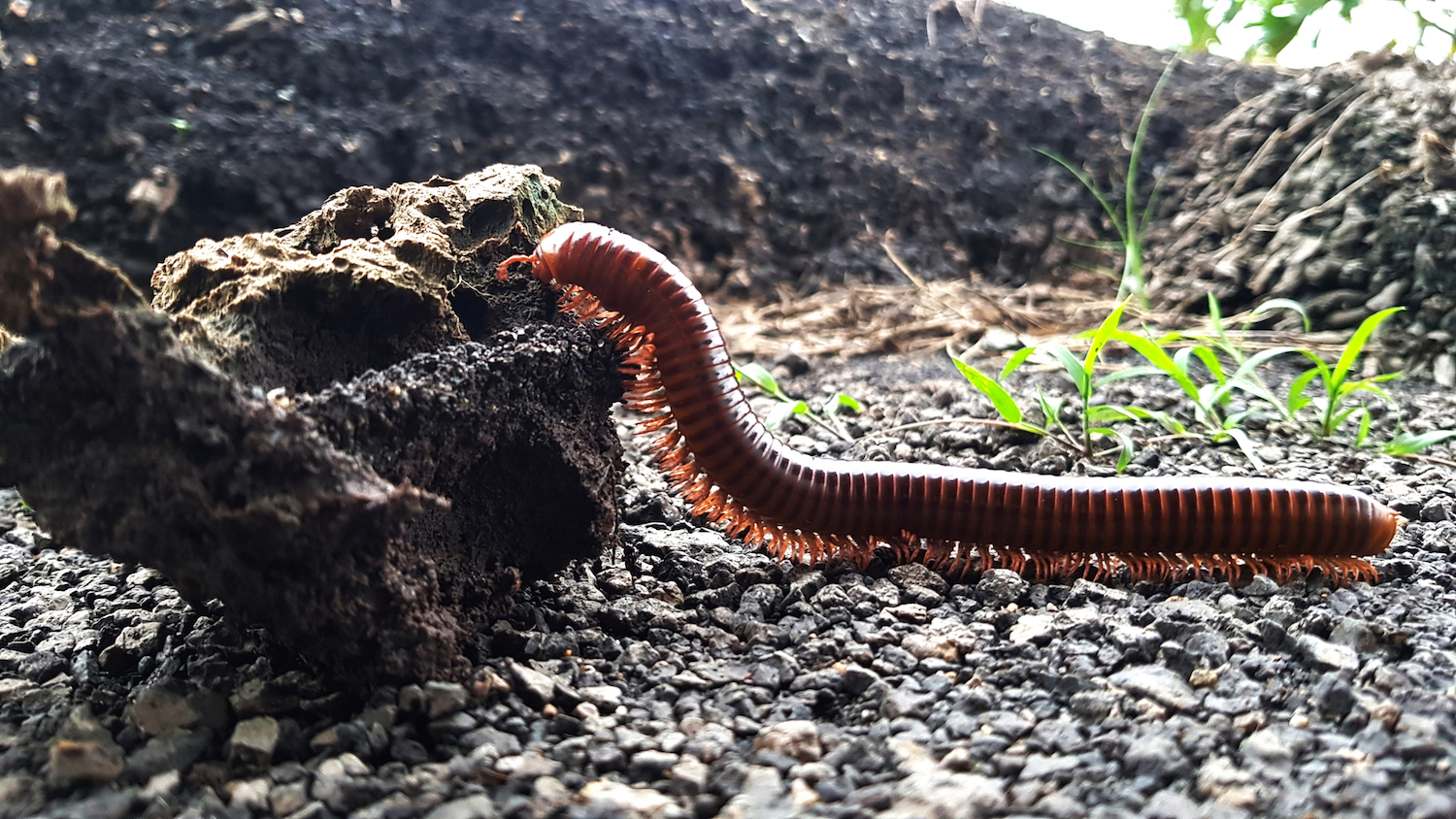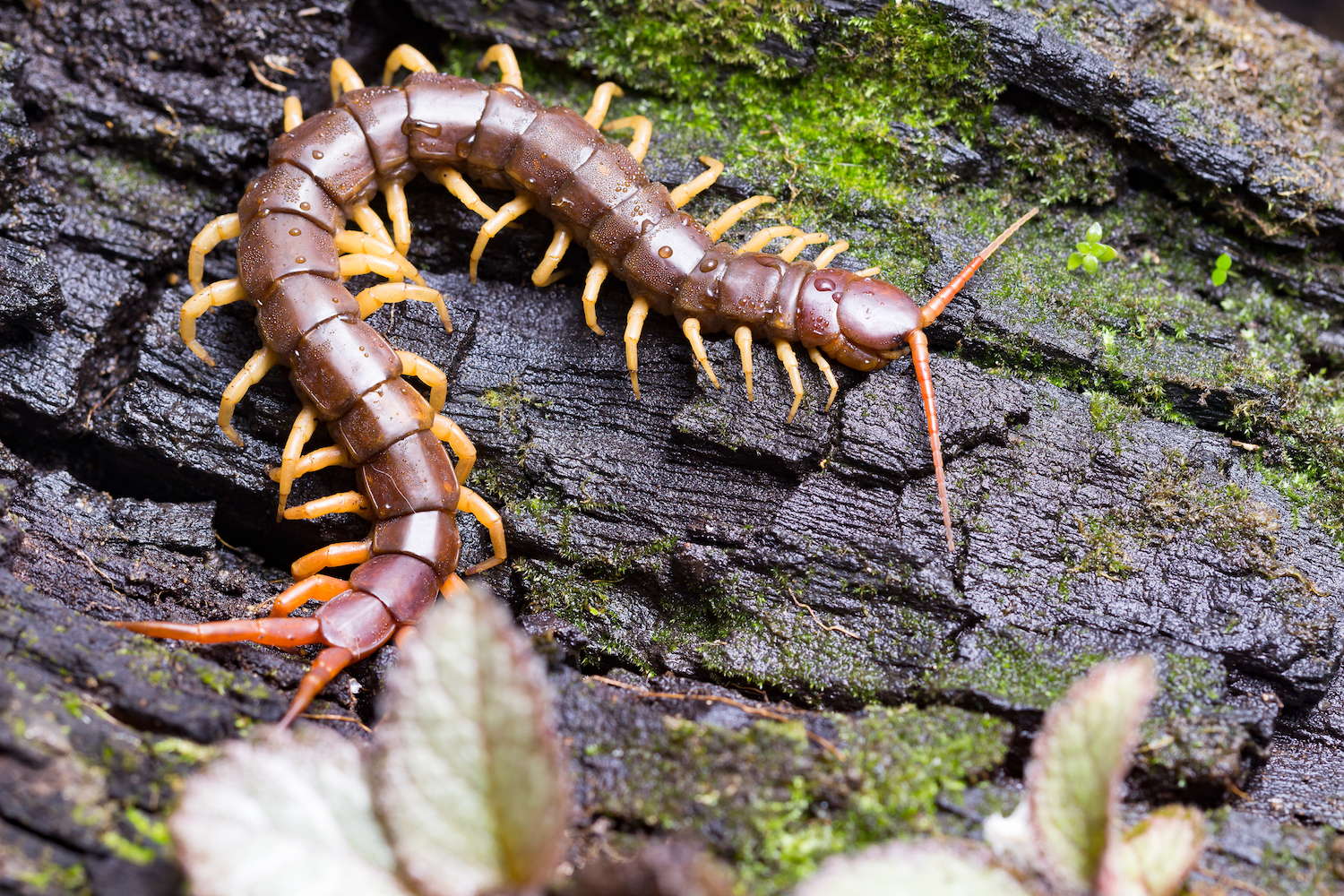Centipedes and Millipedes: Lots of Legs, What's the Difference?

Centipedes and millipedes belong to the subphylum of arthropods called myriapoda. In Greek, myriapoda means "countless feet." Myriapods share the basic body structure of a head and segmented body, or trunk, with many legs.
Scientists estimate that there are around 8,000 species of centipedes and 80,000 species of millipedes. "We have a wealth of diversity" within these groups, said Derek Hennen, an entomologist and doctoral student at Virginia Tech. The diversity of centipedes and millipedes may not be obvious to nonexperts, Hennen said, because many species of these arthropods are found in only a limited range.
Noticeable differences
Behavior is one of the easiest ways to tell if a many-legged critter discovered under a log or a pile of dead leaves is a centipede or a millipede. "If it runs away immediately, it will be a centipede. If it curls up and stays motionless, it will be a millipede," Hennen said.
These behaviors hint at the general lifestyles of centipedes and millipedes. Most centipedes are swift predators that typically eat smaller arthropods. Millipedes, on the other hand, eat decaying plant matter. Rather than scrambling away from predators, millipedes secrete irritating or poisonous chemicals to deter creatures that want to eat them.
Leg position can also help with identification. Centipedes' legs typically spread away from the body, while millipedes' legs point down to the ground.
Many other distinguishing features separate these two groups of invertebrates, but those traits are difficult to see without getting a closer look, Hennen said.
Millipedes belong to the class diplopoda, which in Latin means "double foot." The name refers to the two pairs of legs millipedes have on each of their body segments. In contrast, centipedes have only one pair of legs per segment.
Get the world’s most fascinating discoveries delivered straight to your inbox.
Centipedes belong to the class chilopoda, which means "lip foot." The name refers to the modified legs on the first body section, which look like mouthparts and are tipped with venomous claws called forcipules.
Habitat
Both centipedes and millipedes are found on every continent except Antarctica. They live exclusively on land, although at least one species of giant centipede has been known to swim.
Centipedes are found in all sorts of terrestrial habitats, even caves deep underground, but they are especially noticeable in extremely dry environments; deserts are home to some of the largest centipedes.
Millipedes, however, prefer moist soil and leaf litter in deciduous forests, although a few species are found in grasslands or deserts. Unlike their centipede cousins, millipedes lack a waxy layer on their exoskeleton that would help retain water.
Size
Centipedes and millipedes come in a large range of sizes relative to each other. The smallest centipedes grow to no longer than 0.4 inches (1 centimeter) long, while the longest may reach over 12 inches (30 cm) long. The largest centipedes have been known to eat small mammals, frogs and even birds.
Fully grown millipedes range from about 0.12 inches (0.32 cm) to around 10.5 inches (27 cm) long. Some millipedes hatch from their eggs with all of the legs they will ever have. Others add segments to the ends of their bodies over their lifetimes, stopping after they reach a certain number. Still others may continue adding segments, and legs, throughout their lifetimes. One species of millipede in California, Illacme plenipes, is only 0.4-1.2 inches (1-3 cm) long but grows as many as 750 legs — that's more legs than any other creature in the world.
Are they dangerous?
Although centipede "bites" aren't known to be lethal, people should generally avoid handling centipedes, Hennen said. Larger ones may be able to puncture human skin with their venomous claws. And although centipede venom has been investigated for use as a painkiller, a bite in the wild may result in pain comparable to that of a wasp sting.
Millipedes do not bite or sting and can generally be handled safely, followed by thorough hand-washing. Their chemical defenses may include poisons, such as cyanide, but typically in very small quantities. But not all millipede secretions are unpleasant to humans. Members of a group called the cherry millipedes release a chemical called benzaldehyde, which smells like cherries or almonds.
Some myriapods come in dull colors that blend in with the earth. Others have bright colors or contrasting patterns, which serve as warnings to would-be predators that the critters would be unpleasant or dangerous to eat. There are millipedes in vibrant yellows, blues and purples. Some millipedes even shine under a black light, and a couple of species are bioluminescent — that is, they produce their own light.
So, why do these creatures have so many legs?
"Why not?" Hennen said, adding that these creatures have survived for some 400 million years. "They've found [a] niche in which all of these legs help them."
Further reading:
- More about the "World's Leggiest Animals," from the University of Tennessee Institute of Agriculture.
- The specific taxonomy of Myriapoda, from the Integrated Taxonomic Information System.
- Fun facts about myriapods from the Library of Congress.




